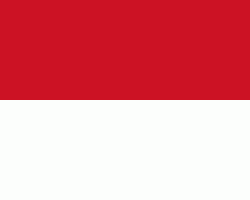Monte Carlo (Monte-Carlo)
Monte Carlo is situated on a prominent escarpment at the base of the Maritime Alps along the French Riviera. Near the quarter's western end is the "world-famous Place du Casino, the gambling center ... that has made Monte Carlo an international byword for the extravagant display and reckless dispersal of wealth". It is also the location of the Hôtel de Paris, Café de Paris and Salle Garnier (the casino theatre which is the home of the Opéra de Monte-Carlo). The quarter's eastern part includes the community of Larvotto with Monaco's only public beach, as well as its new convention center (the Grimaldi Forum), and the Monte-Carlo Bay Hotel & Resort. At the quarter's eastern border, one crosses into the French town of Beausoleil (sometimes referred to as Monte-Carlo-Supérieur), and 8 km to its east is the western border of Italy.
In 1856, Charles III of Monaco granted a concession to Napoleon Langlois and Albert Aubert, to establish a sea-bathing facility for the treatment of various diseases, and to build a German-style casino.
The initial casino opened in La Condamine in 1862, but was unsuccessful. It relocated several times, before reaching its present location in the "Les Spélugues" (The Caves) area of Monte Carlo. Success came slowly, largely because Monaco was inaccessible from much of Europe. The railway, installed in 1868, brought with it an influx of people, and Monte Carlo grew in wealth.
Saint-Charles Church on Monte Carlo's Avenue Sainte-Charles was completed in 1883. It was restored in its centenary year.
The municipality of Monte Carlo was created in 1911, when the Constitution divided the principality of Monaco into three municipalities. Monte Carlo encompassed the existing neighborhoods of La Rousse/Saint Roman, Larvotto/Bas Moulins, and Saint Michel. The municipalities merged in 1917, after accusations that the government used them to "divide and conquer". Since then, they are wards (quartiers). Today, Monaco is divided into 10 wards, with an eleventh planned (but currently postponed) to encompass land reclaimed from the sea (see the "Administrative divisions" section of Monaco for additional details).
The quarter of Monte Carlo was served by tramways from 1898 to 1931. It linked all parts of Monaco (see transportation in Monaco). In 2003 a new cruise ship pier was completed in the harbour at Monte Carlo.
Map - Monte Carlo (Monte-Carlo)
Map
Country - Monaco
 |
 |
| Flag of Monaco | |
With an area of 2.1 km2, it is the second-smallest sovereign state in the world, after Vatican City. Its 19,009 /km2 make it the most densely-populated sovereign state in the world. Monaco has a land border of 5.47 km and the world's shortest coastline of approximately 3.83 km; it has a width that varies between 1700 and 349 m. The highest point in the state is a narrow pathway named Chemin des Révoires on the slopes of Mont Agel, in the Les Révoires ward, which is 161 m above sea level. The principality is about 15 km from the border with Italy. Its most populous ward is Larvotto/Bas Moulins with a population of 5,443 as of 2008. Through land reclamation, Monaco's land mass has expanded by 20 percent. In 2005, it had an area of only 1.974 km².
Currency / Language
| ISO | Currency | Symbol | Significant figures |
|---|---|---|---|
| EUR | Euro | € | 2 |
| ISO | Language |
|---|---|
| EN | English language |
| FR | French language |
| IT | Italian language |















